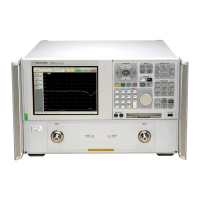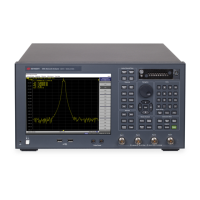3-20 Service Guide E8364-90038
Tests and Adjustments PNA Series Microwave Network Analyzers
System Verification E8362C, E8363C, E836C
Measurement Uncertainty
Measurement uncertainty is defined as the sum of:
• the residual systematic (repeatable) errors, and
• the random (non-repeatable) errors
in the measurement system after calibration.
The systematic errors are:
• directivity,
•source match,
•load match,
• reflection and transmission frequency tracking, and
• isolation (crosstalk).
The random errors include:
•noise,
•drift,
• connector repeatability, and
• test cable stability.
A complete description of system errors and how they affect measurements is provided in the analyzer’s
on-line embedded help.
Any measurement result is the vector sum of the actual test device response plus all error terms. The
precise effect of each error term depends on its magnitude and phase relationship to the actual test device
response. When the phase of an error response is not known, phase is assumed to be worst-case (180 to
+180). Random errors such as noise and connector repeatability are generally combined in a
root-sum-of-the-squares (RSS) manner.

